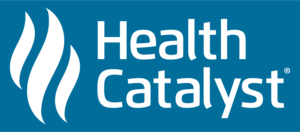
The DFW Hospital Council posts guest blogs by Associate Members. The following was provided by Health Catalyst.

One of the ongoing challenges healthcare systems face is managing hospital patient flow—the movement of patients through the hospital from entry to discharge. If not managed effectively, patient flow can have negative ripple effects throughout the health system.
Efficient hospital patient flow allows newly admitted patients to get to the right place as soon as they enter the hospital, current patients to seamlessly transition to the right unit, and patients who are ready for discharge to leave the hospital with as little delay as possible. When hospitals manage hospital patient flow effectively, both the health system and the patients’ benefit—hospitals don’t keep patients longer than necessary, and patients spend the minimum amount of time at the hospital, making room for new patients who need care.
Improve Hospital Patient Flow with Machine Learning
One way for health systems to improve hospital patient flow is by leveraging machine learning (ML) to understand processes and obstacles better. Because hospital patient flow is so complex and full of moving parts, ML offers predictive models to assist decision makers with flow information based on near real-time data—insight to improve hospital patient flow and alleviate capacity strain burdens. The goal of ML is not only to create predictive models but to ultimately improve, and in some cases fix, the challenges that arise from poor hospital patient flow.
Three Keys to ML Success
Key 1: Build support for data science.
Introducing data science requires strong leadership support at the highest level. Executive leaders must understand the value of data science and how a centralized approach to all data analytics within the health system enables data science to succeed. With C-suite support and a data science team, data scientists are ready to work with other departments and turn data into intelligence that drives better decision making.
Key 2: Create a ML pipeline to aggregate all data sources.
To leverage all the data available to a health system, the data science team should create an end-to-end ML pipeline that aggregates the data. The pipeline should include all data sources, storage, transformation and modeling, and visualization components. The ML pipeline must include every data source—if the data isn’t accurate or doesn’t provide a complete picture, the predictive models won’t identify the right areas for opportunity, resulting in wasted effort.
Key 3: Form a leadership team to govern data.
Another essential piece for ML success is to include leaders from other departments. Leadership inclusion has two benefits: 1) It ensures multiple viewpoints when discussing the data science strategy within the health system, and 2) it helps garner support for data science from a variety of departments throughout the organization.
For example, a comprehensive leadership team could include leaders from departments—such as operations, nursing, patient satisfaction, case management, and providers/clinicians—so that the data science team can develop champions for data science across other departments. Creating data science champions who are not members of the data science team makes data science implementation more likely to succeed. It helps team members trust it more when they see their leaders—whom they already trust—support it.
Back-Testing Models Is Key to Garner ML Support
Another critical step in achieving long-lasting institutional support for ML is back-testing models. Back-testing involves meeting with team members to show them how well the model performed compared to what actually happened. This increases transparency and sets realistic team member expectations about predictive models (i.e., that they aren’t perfect).
Another valuable practice when discussing ML models with team members is to use a variety of models and compare which models are the most accurate. Comparisons help team members understand that different models have varying degrees of accuracy and that no models are ever 100 percent accurate.
In the process of refining the model, leaders and team members become invested in the model, offer suggestions for improvement (such as adding new data variables), and eventually own the model. This strategy for increasing participation and support for data science also contributes to data democratization.
ML with Expertise Improves Hospital Patient Flow
Hospital patient flow challenges are not a single department problem but an issue the entire health system should strive to overcome. An agile approach to data science allows leaders to experience the data, not just review it. Agility within ML is crucial because, with each model iteration, participation from a clinician or an administrative leader increases their understanding and, as a result, the accuracy of the predictive model. At this point, leaders throughout the organization are referencing data and then leveraging it to make decisions.
ML models can improve hospital patient flow but only do so effectively when leadership adds valuable perspectives by suggesting new variables to consider in the predictive models. When ML and committed team members come together, ML is more accurate because it is sensitive to a health system’s needs, schedules, insurance plans, and, most importantly, its patients.
Health Catalyst – Managing Hospital Patient Flow
06/04/2020